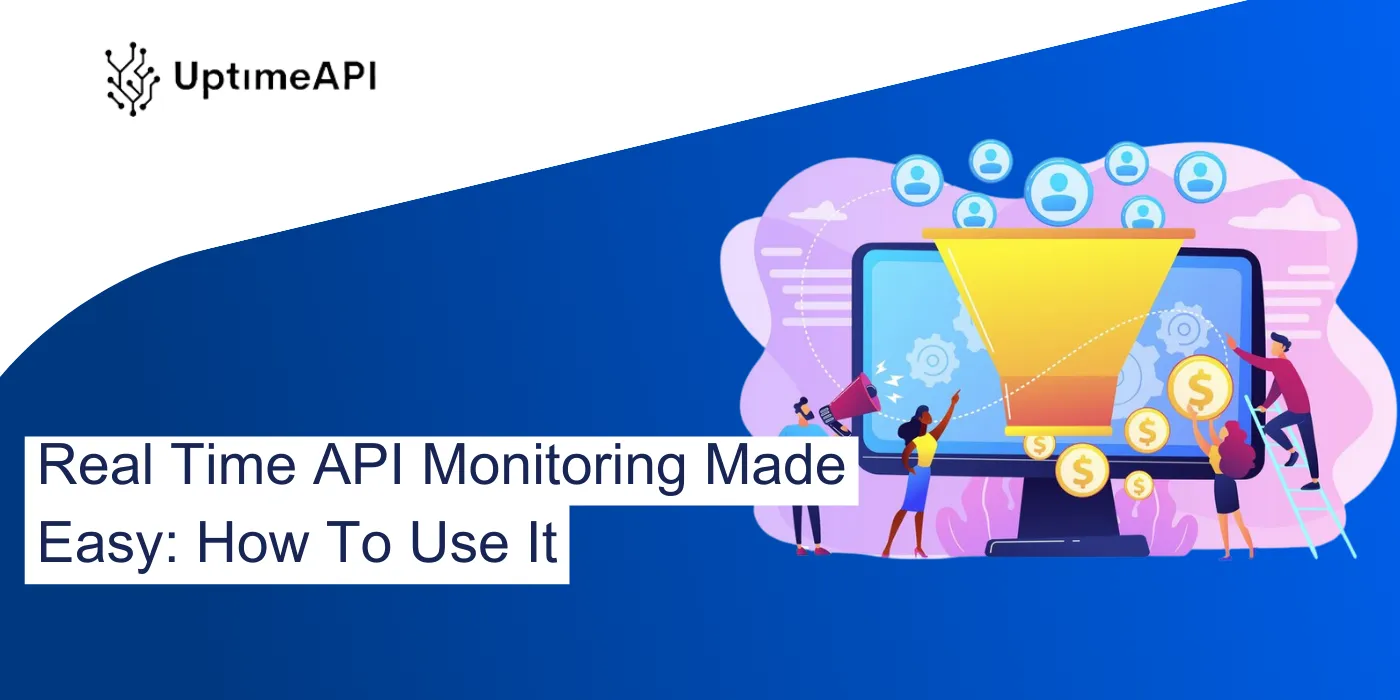Real Time API Monitoring Made Easy: How To Use It

Real-time API monitoring is a critical practice for businesses to ensure the reliability and performance of their APIs. UptimeAPI provides a user-friendly platform that simplifies the process of monitoring APIs in real-time, empowering organizations to proactively manage their APIs and deliver exceptional user experiences. This article will guide you through the steps of using UptimeAPI for real-time API monitoring effectively.
Getting Started with UptimeAPI
Sign Up for an Account
The first step to using UptimeAPI for real-time API monitoring is to sign up for an account on the UptimeAPI website. Simply visit the UptimeAPI website and follow the registration process to create your account. Once registered, you will have access to the UptimeAPI dashboard and monitoring tools.
Add Your APIs
After creating an account, the next step is to add your APIs to the UptimeAPI dashboard. You can easily add APIs by entering the API endpoint URLs and setting up monitoring parameters such as monitoring frequency and alert thresholds. UptimeAPI allows you to monitor multiple APIs simultaneously, providing comprehensive visibility into the performance of your API ecosystem.
Monitoring Your APIs in Real-Time
Real-Time Performance Metrics
Once your APIs are added to the UptimeAPI dashboard, you can start monitoring them in real-time. UptimeAPI provides real-time performance metrics such as response times, error rates, and availability status for each monitored API. These metrics allow you to track the performance of your APIs continuously and identify any issues promptly.
Customizable Alerts and Notifications
UptimeAPI offers customizable alerts and notifications to keep you informed about any deviations in API behavior. You can set up alerts based on specific criteria such as downtime duration, error rates, or response times. When an issue is detected, UptimeAPI will send you instant alerts via email or SMS, enabling you to take immediate action to resolve the issue.
Analyzing Historical Data and Trends
Historical Performance Analysis
In addition to real-time monitoring, UptimeAPI allows you to analyze historical data and trends to gain insights into API performance over time. By reviewing historical performance data, you can identify patterns, pinpoint recurring issues, and make data-driven decisions to optimize API performance and reliability.
Performance Trend Forecasting
UptimeAPI's historical data analysis capabilities enable you to forecast performance trends and anticipate potential issues before they occur. By leveraging historical data insights, you can proactively address performance bottlenecks, optimize API resources, and ensure a seamless user experience for your customers.
Leveraging UptimeAPI's Scalability and Integration
Scalable Monitoring Solutions
UptimeAPI is designed to scale with the growing needs of your business, supporting a wide range of APIs and integrations with popular development tools and platforms. Whether you are monitoring a single API or a complex API ecosystem, UptimeAPI offers scalability and flexibility to meet your evolving monitoring requirements.
Seamless Integrations
UptimeAPI seamlessly integrates with popular development tools and platforms, allowing you to streamline your monitoring workflows and consolidate monitoring data in one centralized location. By integrating UptimeAPI with your existing tools, you can enhance visibility, collaboration, and efficiency in monitoring your APIs in real-time.
Conclusion
In conclusion, real-time API monitoring made easy with UptimeAPI enables businesses to proactively manage their APIs, optimize performance, and deliver exceptional user experiences. By following the steps outlined in this guide, you can effectively use UptimeAPI to monitor your APIs in real-time, analyze performance data, and leverage historical insights to ensure the reliability and performance of your API ecosystem. With its user-friendly interface, customizable alerts, and scalability, UptimeAPI simplifies the process of real-time API monitoring, empowering organizations to stay ahead of performance issues and deliver seamless user experiences consistently.